The church built for the Budapest-Soroksár-Újtelep Reformed Mission Parish between 2018 and 2020 is the newest sacral building to be completed in Soroksár. Protestant churches have only been built in the centuries-old town, now a part of the 23rd district, in the last years.
What is Soroksár today was largely unpopulated in the Middle Ages, the Village of Saint Denis stood on its southern areas but was abandoned during the Ottoman occupation. Following the liberation of Buda, the fertile fields of Soroksár were tended to by Catholic farmers of German descent.
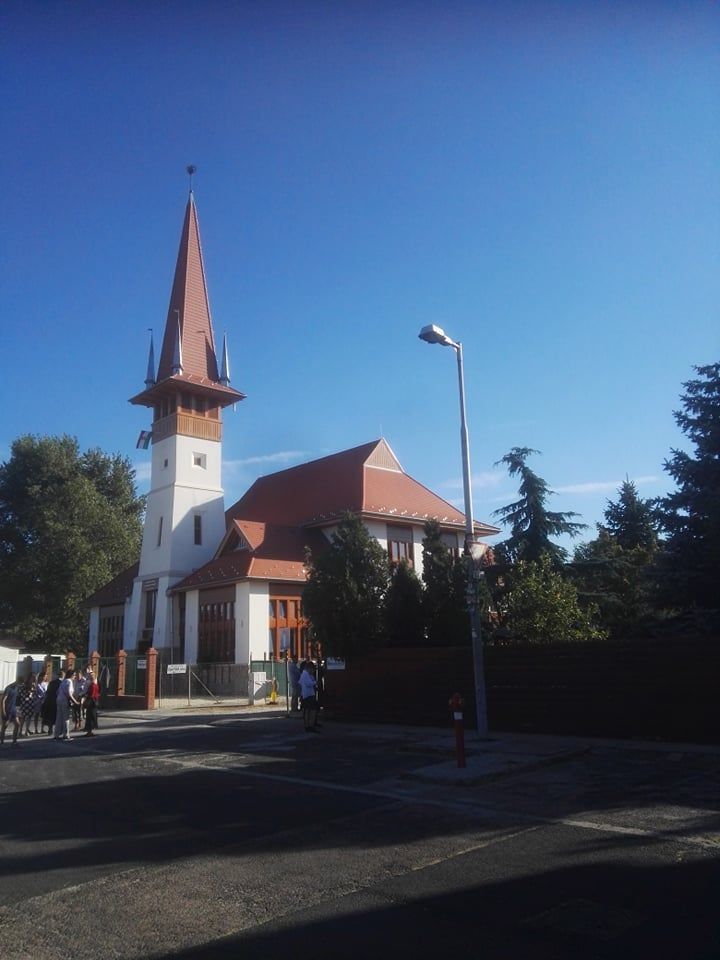
The building with a central tower encircled by four turrets is reminiscent of the churches in Kalotaszeg. (Photo: Máté Millisits)
The Roman Catholic Church of the Assumption of the Blessed Virgin was built by Antal Grassalkovich (1694–1771) a patron of several baroque churches built around Budapest. The period between his death and World War I was a relatively peaceful time in the village, only disturbed by fires and epidemics.
The development of transportation infrastructure changed life in Soroksár drastically. While the village had previously been an agricultural area, factories and workshops moved in, accelerating urbanisation.
Following the First World War, a large number of Reformed faithful moved into the town from the Great Plain or areas of the country that were lost as a result of the Treaty of Trianon. The town of Soroksár was made a part of Budapest in the 1950s during the creation of Greater-Budapest and was listed as the 20th district together with Pesterzsébet.
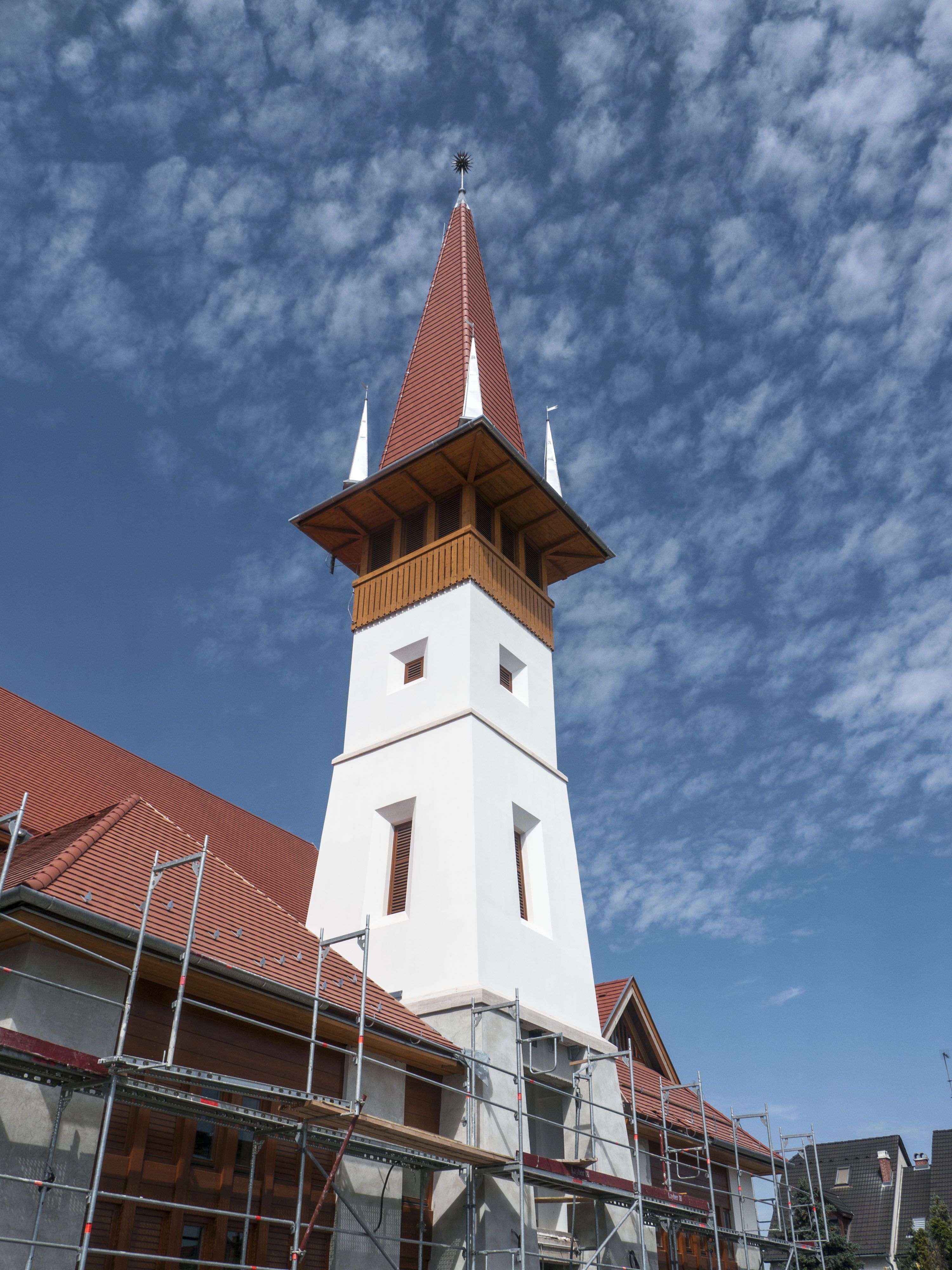
The star atop the tower climbs to a height of 35 metres (Photo: László Szabó)
Soroksár became Budapest’s 23rd District as a result of a local referendum in 1994. The motorways built in the last 30 years border the area in an L-shape, bringing large logistics bases. A new area of the settlement began to grow known as Újtelep. A Roman Catholic Church was built here in 2000–2002. A church for the Reformed community was finally completed recently.
The Soroksár Reformed Congregation
The Reformed congregation in Soroksár was led by the assistant pastor József Galambos from the end of the 1930s. Services were held in the primary school. The congregation formed an independent local church in 1939, after splitting from the Csepel Reformed Congregation. Plans to build a church were already being formulated at the time.
The congregation was given land on the market square for the building. The church was designed by Bálint Szeghalmy (1889–1963) in a style reminiscent of the Reformed Churches of Kalotaszeg. However, construction never began due to World War II, and after the conflict, the designated land was no longer available.
Following the war, the congregation received the plot under 11 Hősök Square (not to be confused with the major landmark in Budapest city centre). The house was converted into a parsonage, and in November 1950 a church without a tower was completed.
A decade of construction
From the beginning of the 1940s, the first Pastor of Soroksár, József Galambos held services in private homes. The congregation purchased the small house under 70 Alsóhatár Road in the Újtelep part of Soroksár in 1957 which served as a space of worship, a classroom for bible studies and a common room for the congregation. Pastor István Kádár Csongor continued preaching in the area and assessed the possibilities of building a church.
In 2004 the church leadership commissioned pastor Gábor Bácsai to unite the local reformed community. In 2007 György Péterffy took over his mantle and led the building of the church.
The foundation stone of the church was lain down on 27 September 2009 in the presence of Bishop István Szabó of the Danubian Church District.
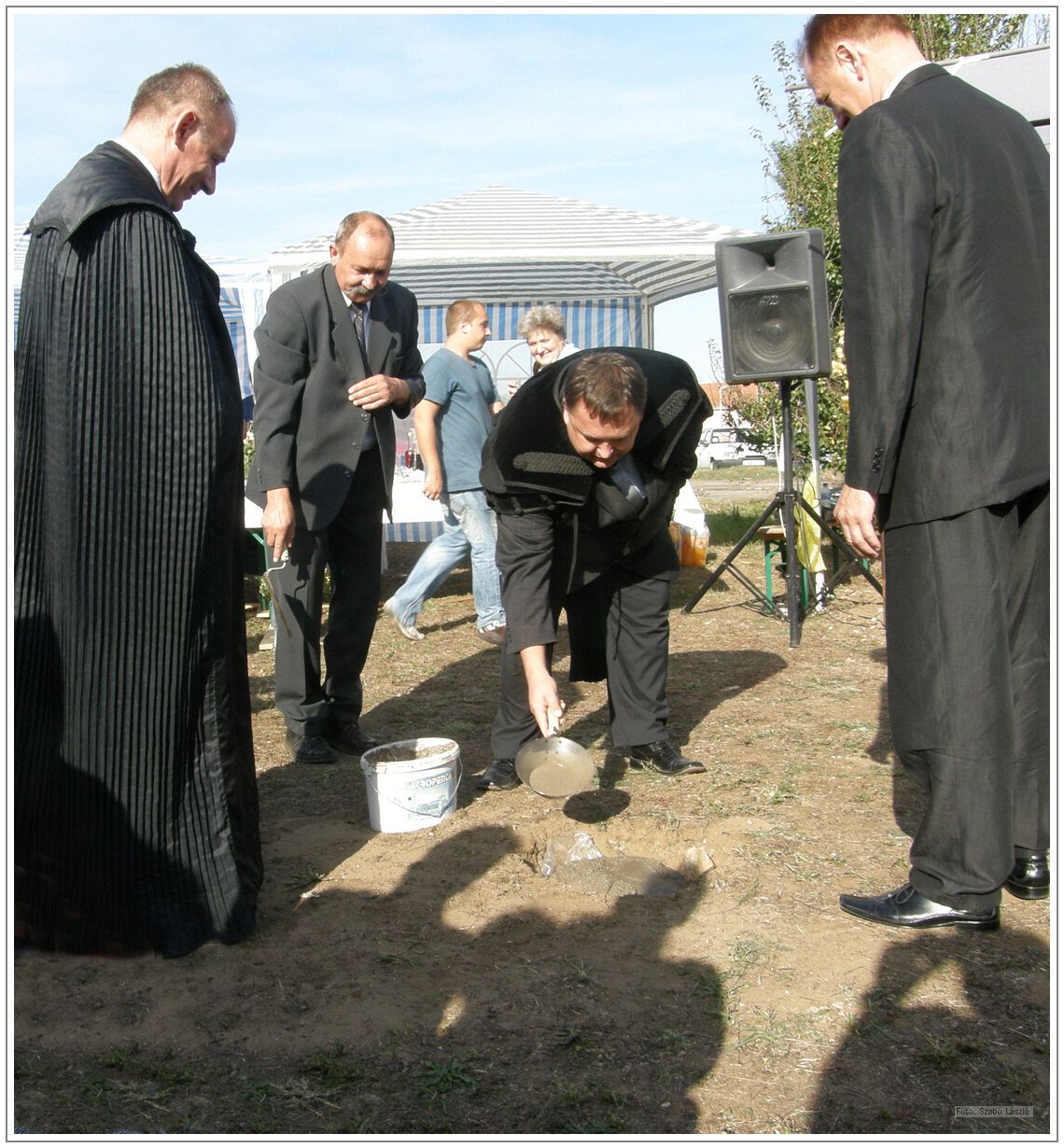
The foundation stone of the church was put in place in September 2009 (Photo: László Szabó)
The congregation sold the house in Újtelek in 2010 and turned the proceeds towards the construction of the new church, which began in 2011. The new church building contains the liturgical assembly hall, a common room and the parsonage. Following this, the congregation gathered in the council chamber of the local Catholic congregation.
The Reformed congregation of Újtelep was recognised as a mission congregation on 30 January 2012 at an extraordinary general assembly of the Southern Budapest Diocese.
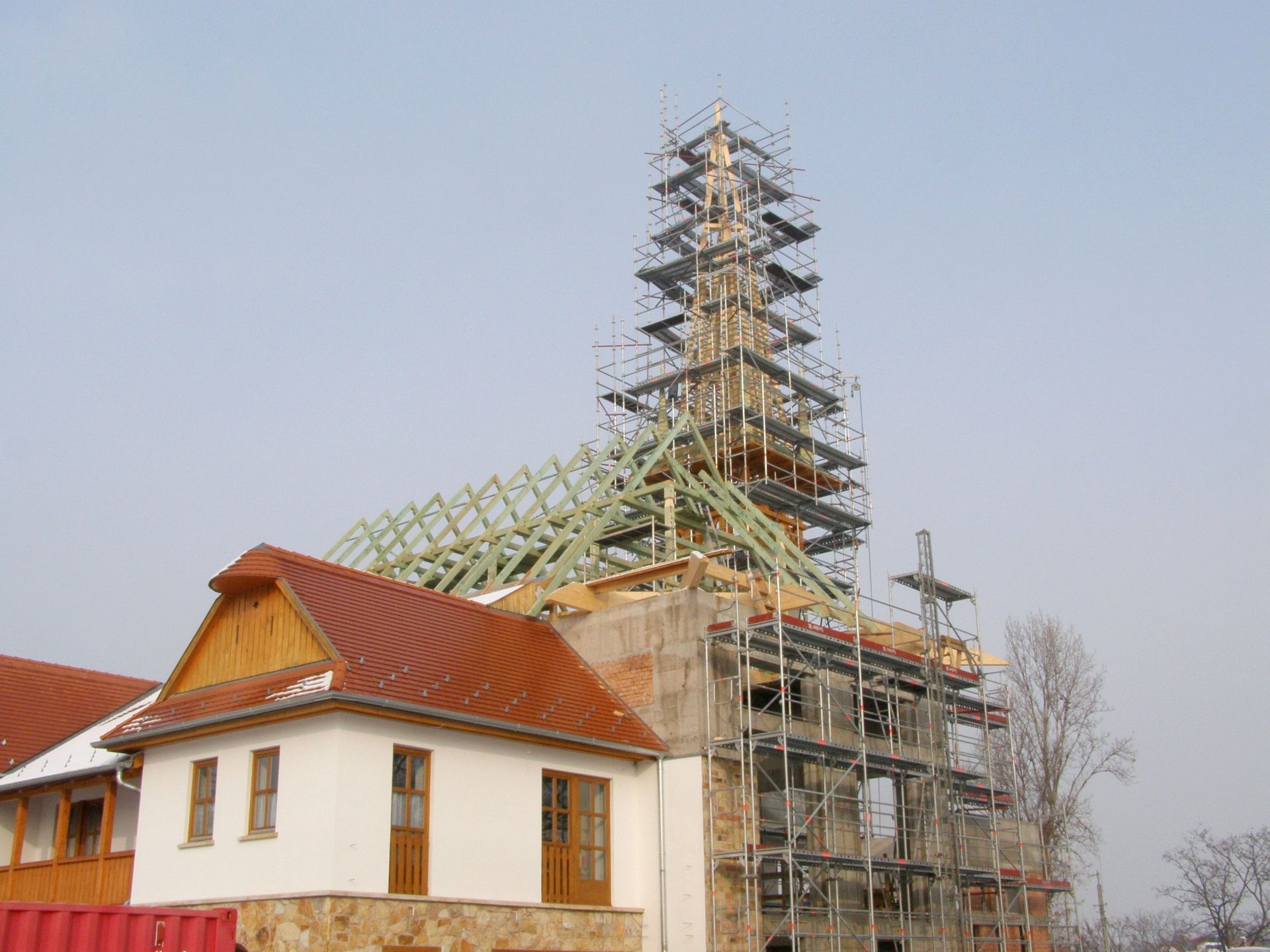
The church under construction in 2019 (Photo: László Szabó)
The parsonage was completed in 2015, and the congregation common room on its ground floor was used for worship, biblical study classes and other congregation events until September 2019.
With the support of the Hungarian government construction resumed in 2017 and on 18 February 2018 the foundation stone documents were moved to their final place at the entrance of the church. Following the ceremony Clerk Pastor of the diocese, László Kiss gave a sermon in which he said:
“This church must be a bridgehead of God’s power, standing between the forces of binding and release. It is thus built on the foundations laid by the apostles, to some we are the scent of life to life and to others the scent of death to death, this is the frightening and wonderful power of binding and release.”
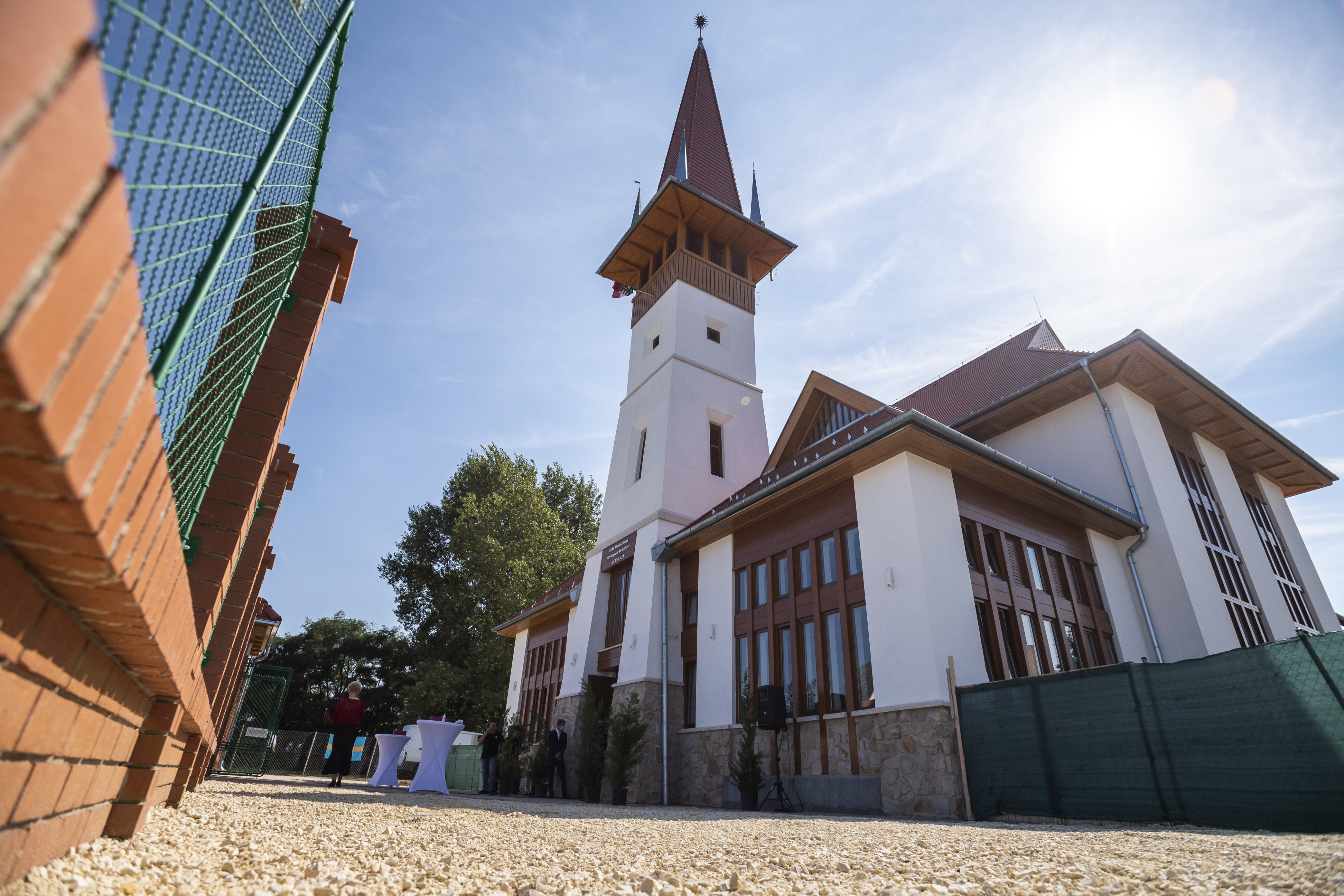 The new church of the Soroksár–Újtelep Reformed Congregation was opened to the public on Saturday on Dinnyehegyi Road in the 23rd District (Photo: MTI / Márton Mónus)
The new church of the Soroksár–Újtelep Reformed Congregation was opened to the public on Saturday on Dinnyehegyi Road in the 23rd District (Photo: MTI / Márton Mónus)
The church was constructed according to the plans of Tamás Rüll of the MAKONA group. The steeply was placed on the tower on 30 November 2018, and together with the Star of Bethlehem on top, it climbs 35 metres. With the completion of the church, the eight-decade-old dream of the Soroksár congregation became a reality.
The inscription on the main façade of the church proclaims: “Built to proclaim the glory of Jesus Christ. Acts 4,12”
The benches form a semi-circle on the ground floor.
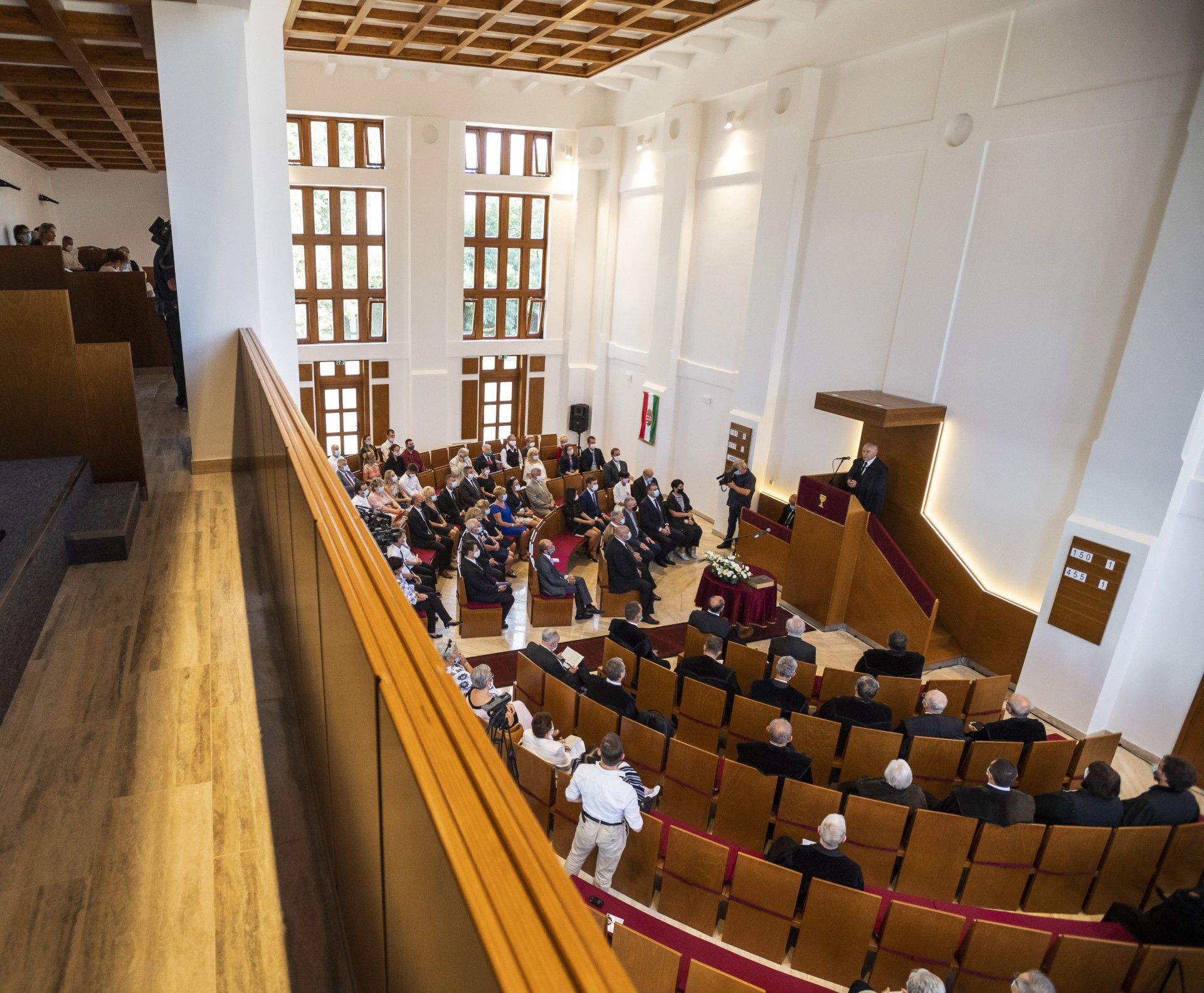
The spacious worship hall (Photo: MTI/Mónus Márton)
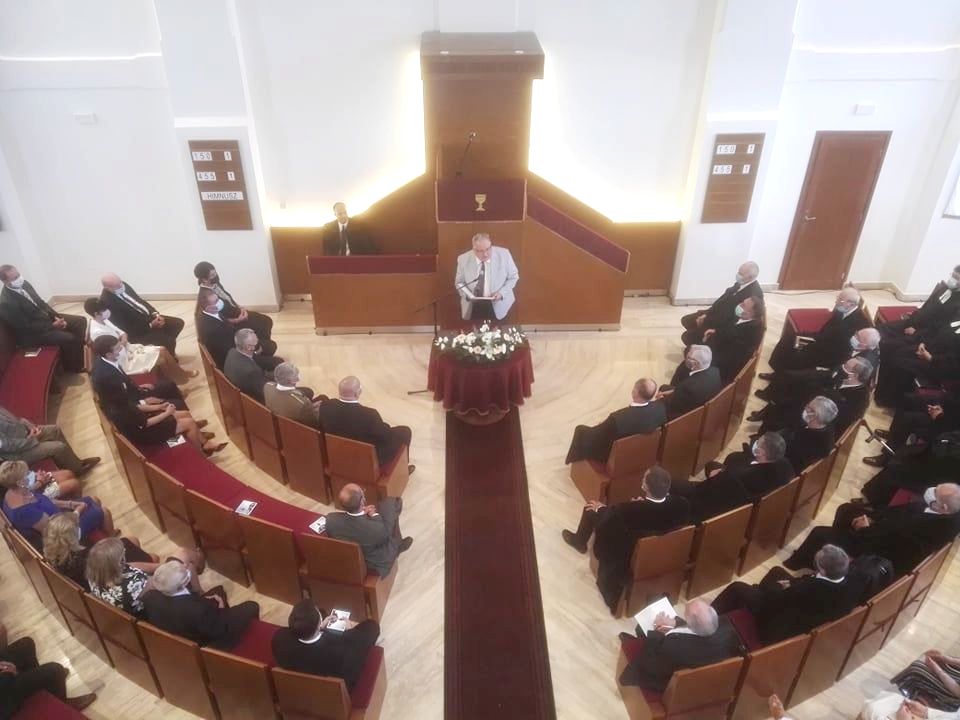
The benches form a semi-circle on the ground floor (Photo: Máté Millisits)
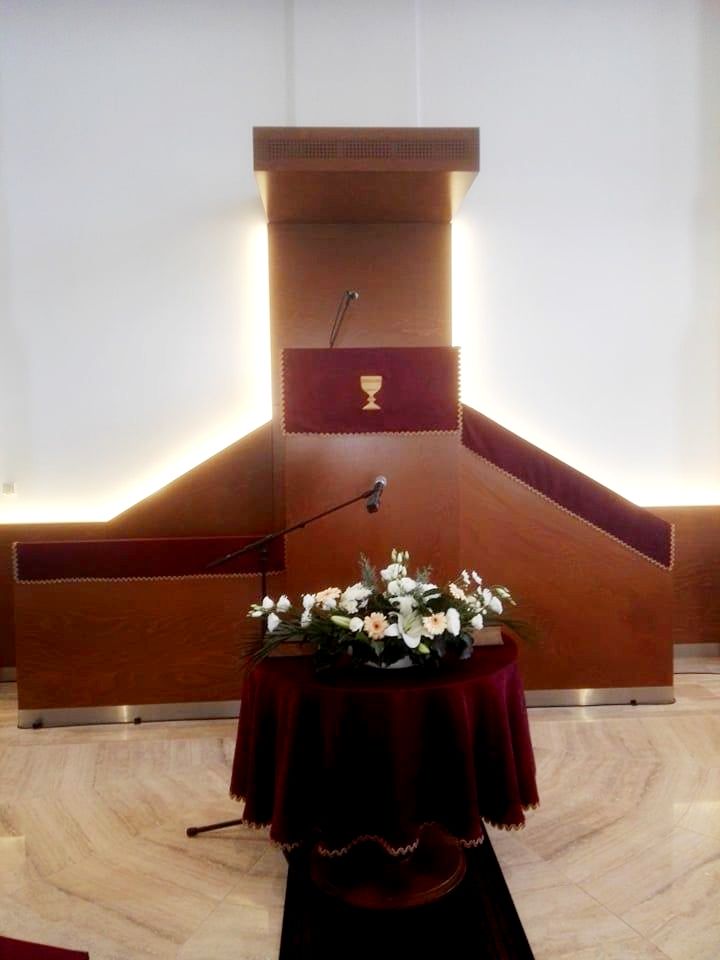
The pulpit (Photo: Máté Millisits)
A gallery was built above the entrance. The two floors together have 215 seats.
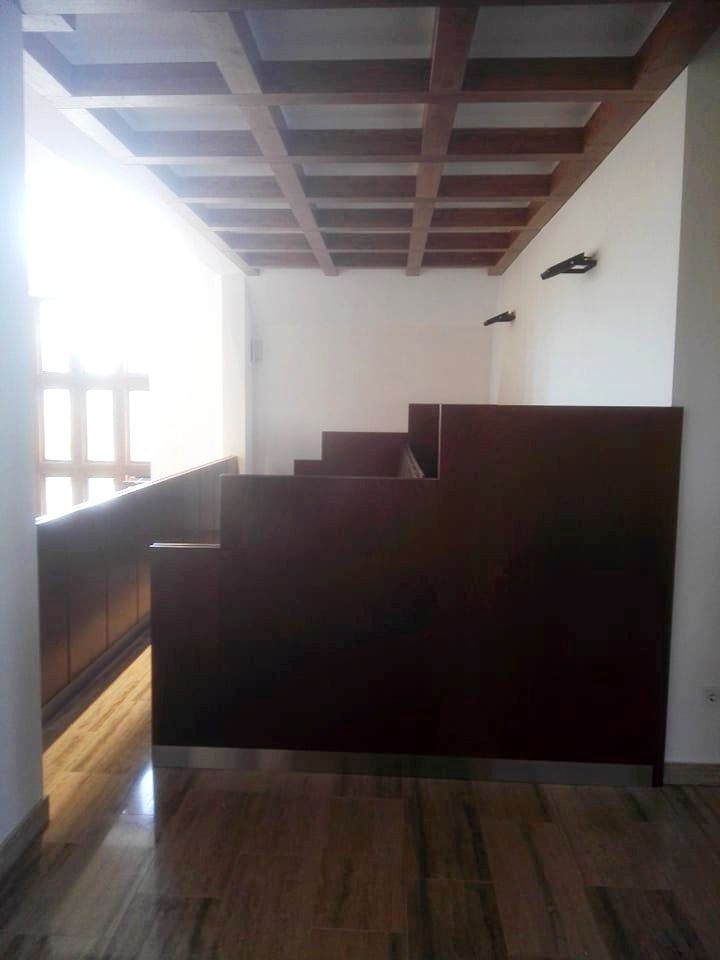
A gallery was also built (Photo: Máté Millisits)
The bell in the tower weighs 140 kg and was cast by Miklós Gombos in Őrbottyán in 2018. One side of the bell is decorated with the Hungarian coat of arms and the inscription “Commissioned by the Budapest-Soroksár-Újtelep Reformed Mission Congregation for the 500-year anniversary of the Reformation, 2017.”
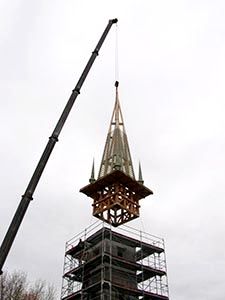
The spite was placed on the tower in 2018 (Photo: László Szabó)
The Lamb of God decorates the other side of the bell with the inscription “SOLI DEO GLORIA.”
The completed church was consecrated on 5 September 2020 by István Szabó Bogárdi, Bishop of the Danubian Church District. The building and members of the congregation were not only blessed by the Reformed pastors present but five Lutheran pastors and the parish priest of the Soroksár-Újtelep Church of our Lady of Fátima. Representing the government, which donated 280 million HUF to the construction, Szilárd Németh relayed the words of Prime Minister Viktor Orbán.
The new Reformed Church of Soroksár is a significant sacral building in 21st-century Hungary. It relays the traditions of the past to the faithful on the outskirts of Budapest and its tower, as seen from the nearby motorway, calls faithful towards it and symbolises the long-standing traditions of the Reformed Church in Hungary.
Cover photo: The new Reformed church in Soroksár (Photo: honvedelem.hu)

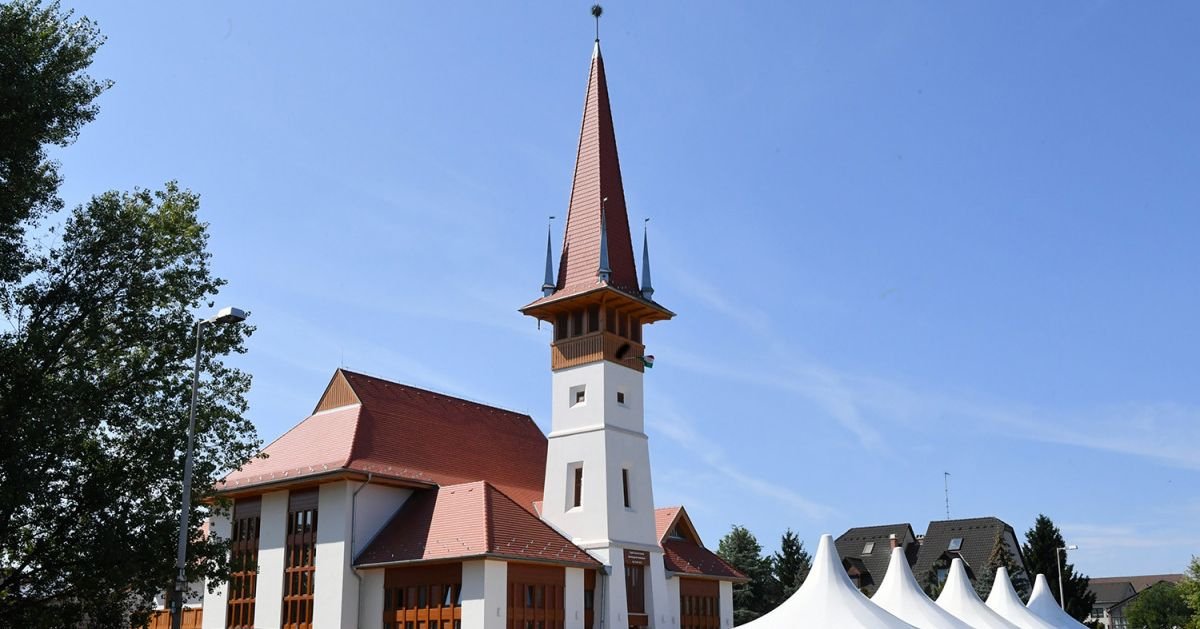




































Hozzászólások
Log in or register to comment!
Login Registration